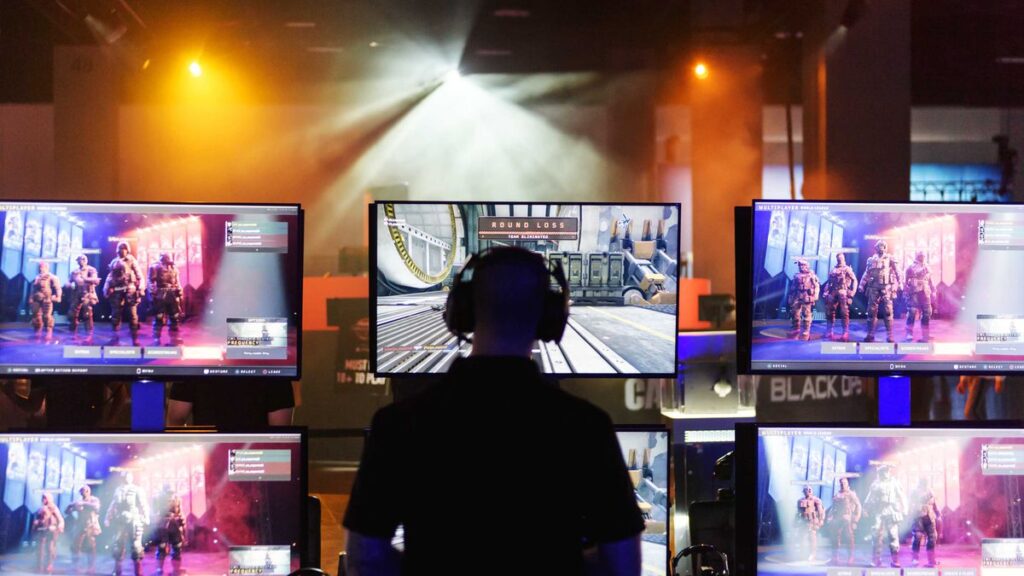The debate on violence in video games and their impact on aggression, particularly in young people, has raged for decades. A recent Supreme Court decision striking down a California law restricting the sale of violent video games to minors reignited this discussion.
Dr. Cheryl Olson, in an op-ed, argued against the law, citing the supposedly unrealistic nature of violent video games and the potential desensitization effect they might have, making them distinct from real-life violence. However, is this a complete picture?
While Dr. Olson highlights the decline in youth violence alongside the rise of video games, this correlation doesn’t necessarily imply causation. Other factors, like socioeconomic status, might play a role. Affluent youth with access to video games might also have less exposure to potentially violent situations on the streets.
However, dismissing the link entirely ignores significant research pointing toward a connection between violent video games and aggressive behavior. In this case study, we’ll discuss some crucial points in comprehending this matter from start to finish, so make sure to read until the end.
Read as well: The many surprising benefits of video games (a case study)
Violence in video games: evidence for a link
At face value, research suggests a cause-and-effect relationship – players exposed to violent video games have exhibited increased aggression compared to those playing non-violent games. This effect was particularly pronounced in children exposed to child-initiated virtual violence.
Studies following children over time have shown that increased exposure to violent video games can lead to more aggressive behavior later. These studies suggest that violent video games might not directly cause violence but might influence how children perceive and respond to the world.
On top of that, large-scale analyses of multiple studies have confirmed a positive link between violent media exposure and aggression. This effect appears stronger for children, potentially due to their developing minds being more susceptible to observational learning.

Finding balance: regulation vs. complete ban
The issue of regulating violence in video games is a tightrope walk between protecting children and preserving artistic expression. An outright ban might appear like a quick fix, but it raises concerns about censorship and freedom of speech.
L. Rowell Huesmann in his research offers a compelling comparison: he argues that video game exposure, particularly for violent content, shares similarities with public health threats like secondhand smoke or lead paint. Just as we regulate these substances to minimize harm, reasonable regulations for video games could be explored.
One potential approach mirrors existing restrictions on age-inappropriate content. Similar to the rating system for movies and limitations on cigarette sales to minors, a tiered system for video games could be implemented. This would allow adults informed access to a wider range of content while safeguarding children from potentially harmful material.
However, regulating video games presents unique challenges. Unlike cigarettes, video games are a complex form of art and entertainment. Defining “violent content” can be subjective, and overly restrictive regulations could stifle creativity and innovation in the gaming industry.
Finding the right balance requires careful consideration. Here are some potential avenues to explore:
- Age-appropriate rating systems: Building on existing models, a more robust rating system could provide clearer guidelines for parents and retailers. This could involve not just a violence rating, but also subcategories like gore, realistic violence, or psychological horror.
- Content labeling: Similar to food labeling that highlights ingredients, video games could display prominent labels for violent content. This would empower parents to make informed choices about the games their children play.
- Public education campaigns: Educating parents and guardians about the potential impact of violent video games can empower them to set healthy gaming habits and monitor their children’s choices.
- Industry self-regulation: The video game industry could develop and enforce stricter content guidelines, similar to those implemented by the movie and television industries.
Ultimately, the goal of regulation shouldn’t be to demonize video games – but rather to ensure responsible development and informed consumption. By finding a balanced approach, we can surely protect children from potential harm while allowing adults to enjoy the full spectrum of video game experiences.
It’s not just about violence in video games!
Most researchers agree that violent behavior is a complex issue with multiple contributing factors. Neighborhoods, families, peers, and individual traits all play a role. Exposure to violence in real life, such as domestic violence or living in a crime-ridden neighborhood, can also significantly increase the risk of aggressive behavior.

By taking a holistic approach that considers all these contributing factors, we can gain a deeper understanding of youth violence and develop more effective prevention strategies. This could involve initiatives that promote positive family dynamics, community-based violence reduction programs, and mental health support services for children and adolescents.
The need for a multifaceted approach:
Violent behavior in young people is a complex tapestry woven from numerous threads. Researchers overwhelmingly agree that there’s no single cause, but rather a confluence of factors that can nudge a youth towards aggression. Let’s delve deeper into some of these key influences that go far beyond violence in video games:
- Social Environment: The neighborhoods children grow up in play a crucial role. Exposure to violence in their surroundings, whether through witnessing crimes or living in a high-crime area, can significantly increase the risk of aggressive behavior. This can create a cycle of violence, where children who witness violence are more likely to become victims or perpetrators themselves.
- Family Dynamics: A healthy and supportive family environment is a critical buffer against aggressive tendencies. Conversely, negative family experiences like domestic violence, abuse, or neglect can significantly increase the likelihood of violent behavior. Factors like poor parental supervision or inconsistent discipline can also contribute to the problem.
- Peer Group Influences: The company young people keep can shape their behavior. Friends who engage in aggressive behavior can act as negative role models, normalizing violence and making it seem more acceptable. Conversely, positive peer groups that promote empathy and conflict resolution can offer a protective influence.
- Individual Traits: Underlying personality traits and mental health conditions can also play a role. Children with impulsivity, anger management issues, or a history of trauma may be more susceptible to engaging in aggressive behavior. Additionally, mental health conditions like depression or anxiety can manifest as aggressive behavior in some cases.
It’s important to remember that family dynamics and parenting styles significantly influence aggression in adolescents. Positive family environments can reduce aggressive behavior, while negative experiences like family violence can increase it.

Violence in video games is not a black-and-white concept
At the end of the day, the debate over the impact of violence in video games is far from settled. While research suggests a link between these games and aggressive behavior, it’s not the sole factor. A nuanced approach that considers the broader context of a child’s life and home environment, along with the potential influence of video games, is crucial. Further research can help us develop effective strategies to address youth violence, promote healthy gaming habits, and foster positive family environments.
The debate surrounding violence in video games is a crucial one for anyone involved in the gaming industry – it reminds us that every game we create carries a certain responsibility to the players. Here at Main Leaf, we’re committed to continuous improvement and providing valuable resources to help develop games all over the globe. Follow our blog for insightful discussions like this one, alongside the latest trends and news in the gaming world!

